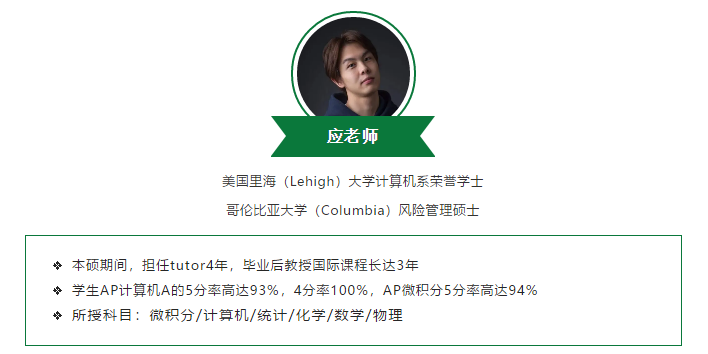
AP比较政府与政治的涉及的专业名词还是很多的,这也是很多同学觉得这门课难的原因之一。所以本文就来分类整理一下AP比较政府的基础词汇。早点看起来,后期学习和复习应该会轻松不少。

考试大约用时2小时25分钟,有两个部分,多项选择和简答题。每个部分占考试成绩的50%。
部分: 多选选择题 ,55 个问题,用时 45 分钟
涉及的领域有:
•比较政治学概论(5%)
•主权、权威和权力(20%)
•政治机构(35%)
•公民、社会、和国家(15%)
•政治和经济变化(15%)
•公共政策(10%)
多选题的总分是基于选对的选项,答错不扣分,不答不得分。
第二部分:简答题,8个问题,1小时40分钟
AP比较政府与政治的简答题包含三种类型的问题:
• 类型一:简答:5个问题
这些问题会要求你来定义概念。从课程涉及的核心国家提取有效信息。
• 类型二:概念:1个问题
主要从课程主题中概述一个重要的问题。
• 类型三:特定国家的问题;2个问题
这个问题要求你提供特定核心国家的信息和分析它们。

Government 政府类
Politics
Government
Democracy
Direct democracy
Representative democracy
Republic
Legitimate
Parliamentary system
Presidential system
A Congress
A President
The Judiciary
The Constitution
宪法
Articles of Confederation
Sovereignty
Unicameral legislature
Shay’s Rebellion
Great (or Connecticut)Compromise
Constitution
Majority Rule
Minority Rights
To propose an Amendment
To ratify an Amendment
Some key facts
Republic
Judicial review
Separation of powers
Federalism
Congress
President
Courts
Checks and balances
Faction
Federalists
Antifederalists
Federalist Papers
Coalition
The Bill of Rights
Ex Post Facto Law
Writ of Habeas Corpus
Bill of Attainder
Amendment1, 4, 5, 6, 7, 8, 9, 10
Amendment2 & 3
Civil Liberties
公民自由
Bill of Rights
Civil liberties
Due-process clause
Equal protection clause
Incorporation
Prior restraint
Freedom of Expression
Criminaland Civil Law
Libel
Free speech
Symbolic speech
Free-exercise clause
Establishment clause
Wall of separation
Religious freedom
Exclusionary rule
Search warrants
Probable cause
The Miranda Rules
CriminalJustice
Good-faithexception
Civil Rights 公民权利类
Separate-but-equal doctrine
Suspect classifications
Strict scrutiny
Reverse discrimination
Equality of opportunities
Affirmative action
Civil Rights
Affirmative Action
Rightsfor Women
Police powers
Privacy and Abortion
Gay Rights
Federalism
宪政主义
Sovereignty
Federalism
Confederation
Confederal system
Nullification
Dual federalism
Grants-in-aid
The States and the Constitution
Categorical grant
Blockgrant
Mandates
Conditions of aid
Public opinion and the Media
Public opinion 公益和媒体类
Poll
Random sample
The Art of Public-Opinion Polling
Sampling error
Elite(political)
New class
Traditional middle class
Gender gap
Liberal
Conservative
Political ideology
Political parties and Interest groups
政党和利益团体
Political party
Interest group
Faction
Lobbyists
National convention
National committee
Congressional campaign committee
National chairman
Federal money
Soft money
Political machine
Ideological party
Solidary
Personal following
Single-member districts
Proportional representation
Plurality system
Caucus(congressional)
Interests Represented by Organizations in Washington Politics
Political efficacy
Solidary incentives
Material incentives
Purposive incentive
Publicinterest lobby
Pluralist theory(politics)
Cue(political)
Campaigns and Elections
选战和选举
Activist
Australian ballot
Voting-age population(VAP)
Voting-eligible population (VEP)
Registered voters
Motor-voter law
Kinds of Elections
General election
Primary election
Closed primary
Open primary
Blanket primary
Runoff primary
Presidential primary
Spots(campaign)
Visual(campaign)
Retrospective voters
Prospective voters
Critical,or realigning,periods
New Deal coalition
Split-tickets
Party-column ballot
Office-bloc ballot
Straight ticket voting
Selective attention
Political action committee (PAC)
Independent expenditures
Soft money
Matching funds
Major Federal Campaign-Finance Rules
Congress 国会类
Party polarization
Congress
Parliament
Franking privilege
Bicameral legislature
The Powers of Congress
Runoff primary
Majority leader (floorleader)
Minority leader
Whip
Speaker
Representative
Senator
Judging qualifications
Privileges
The size of Congress
Party vote
Caucus(congressional)
Standing committees
Select committees
Joint committees
Conference committees
Major committees
Minor committees
Exclusive committees
Major committees
No-major committees
Simple resolution
Concurrent resolution
Joint resolution
Discharge petition
Restrictive rule
Closed rule
Openrule
House
Senate
Filibuster
Riders
Cloture resolution
Double tracking
Voice vote
Division vote
Roll-call vote
Veto
The Presidency
总统制
Executive privilege
Veto message
Pocket veto
Line-item veto
Legislative veto
Signing Statements
Circular structure
Pyramid structure
Cluster structure
Cabinet
The President: qualifications and benefits
Trial balloon
Impeachment
Budget resolution
Continuing resolution
Budget deficit
Budget surplus
The Bureaucracy 官僚制度类
Bureaucracy
Discretionary authority
Competitive service
Excepted service
Name-request job
Iron triangle
Issue network
Authorization legislation
Appropriation
Trust funds
Committee clearance
Red tape
希望以上内容可以帮到你的AP比较政府与政治考试。当然,AP政治除了对词汇有要求,对表达能力也有要求,复习难度较大。如果想更高效地复习这门人文课,可以点击预约试听【AP复习冲刺班】——
全球海归授课,
根据学员、学校进度定制课程,
授课逻辑严谨流畅,
将所有知识联系成一个有机体,
带你快速熟悉、启发思维,
大考点睛,重点串讲,
复习多门科目也能兼顾5分。


除了AP比较政府与政治词汇,你还可以看——

学习有方法,成长看得见
筑梦牛剑/G5/常春藤
